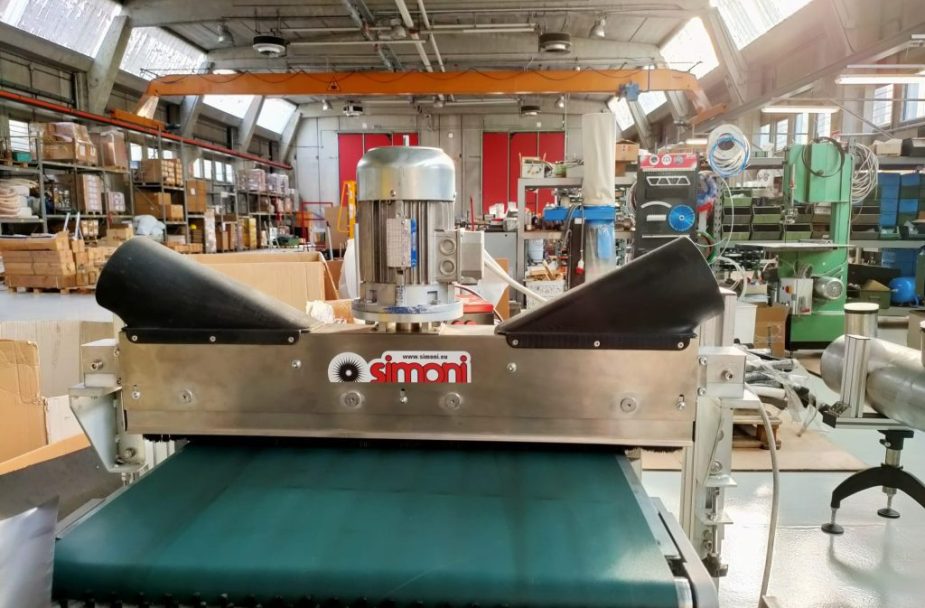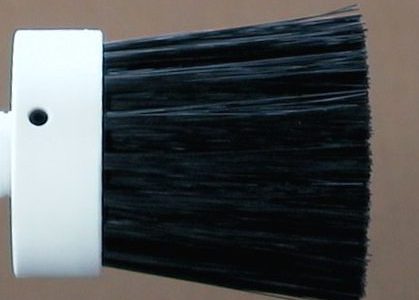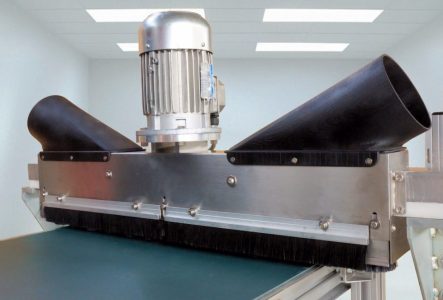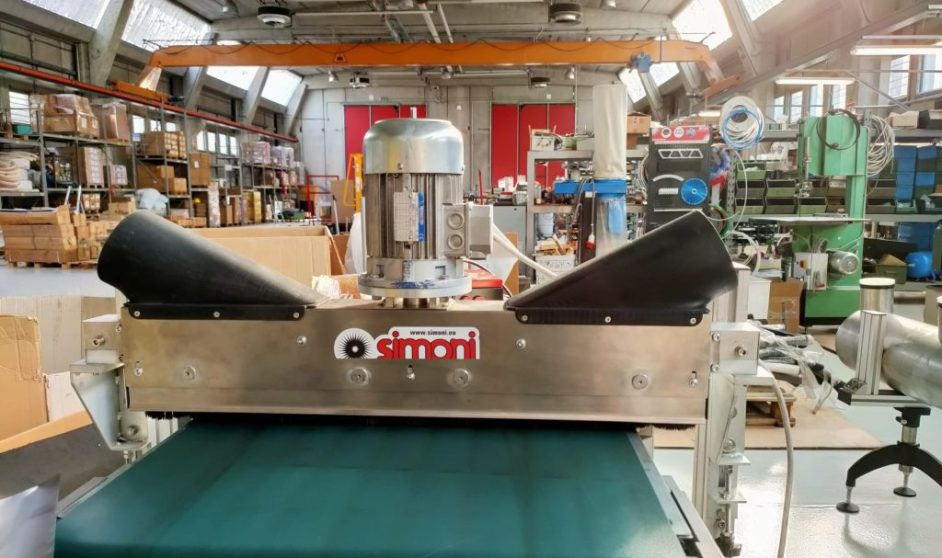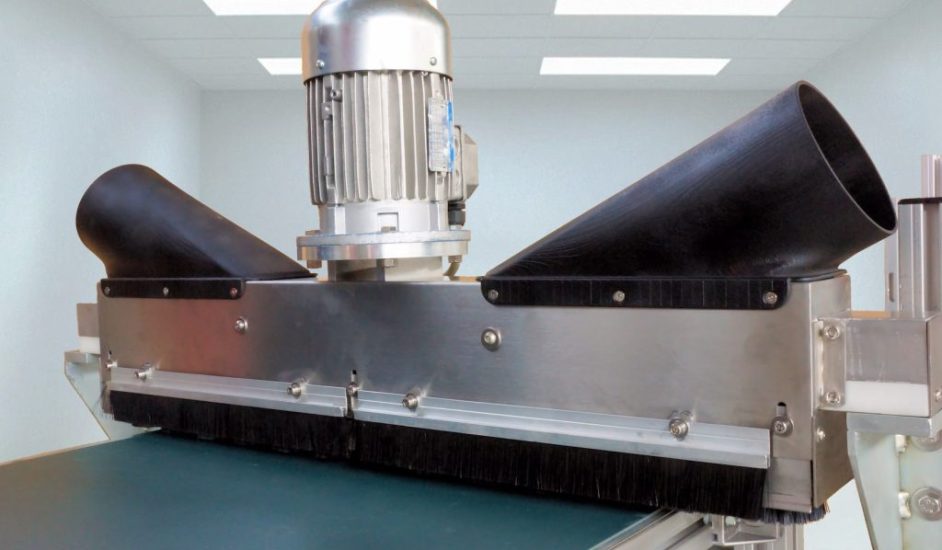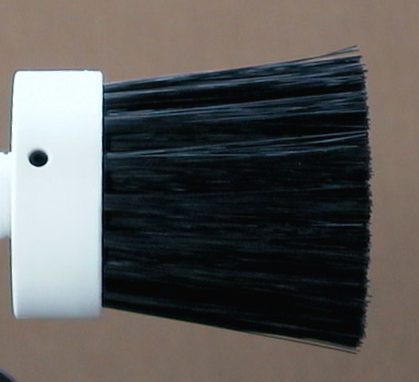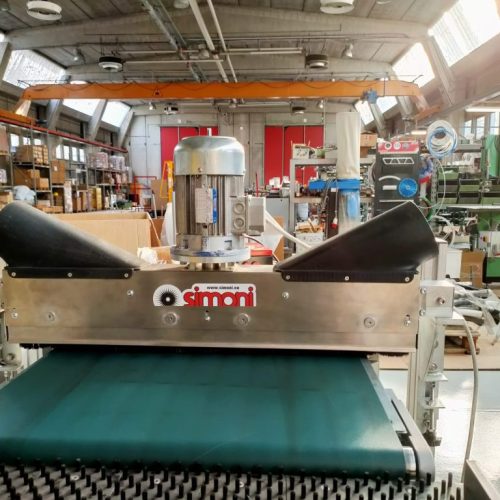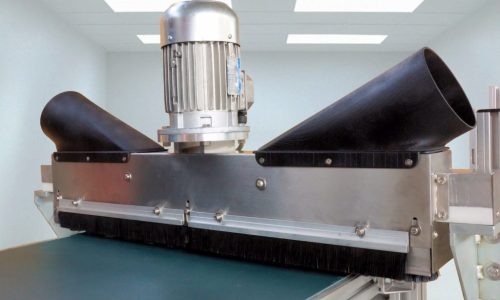Brush Gate
Generalities
Brush Gate is a dust collector compact, whose cross section is about 100×120 mm, which therefore can be easily inserted into all processing lines. A barrier of front brushes captures and removes dust from the panels, while the integrated fume hood removes it. The brushes work dry, that is, without the use of liquids. This is an important feature, as the liquids used by wet-processing machines give several drawbacks: cost, processing waste when the liquid runs out, and humidification of the product. The speed of the brushes can be easily adjusted from the control panel by adapting to the speed of the panel.
Brush Gate is built modularly, thus being able to cover even large panels with the same limited footprint. Brush filaments can be adapted to any situation and type of dust for maximum efficiency.
To de-dust both sides of the panel, 2 machines can easily be installed by simply removing a pair of transport rollers to make room for the lower Brush Gate. Brush Gate, unlike other systems that work only on the plane, thanks to the front brushes and with a special configuration, can also dust the edges of the panel. The customer can use the existing suction system on the line.
Because of its characteristics Brush Gate is particularly suitable for treating wood panels, but it can also be used for plastic sheets or, with appropriate brushes, for film. Two ionizing bars or, alternatively, our antistatic brushes can be optionally installed at the inlet and outlet of the panel to reduce the electrostatic charge that often makes the cleaning process difficult. We normally have an 800 mm machine to perform material testing.
Upon request, we can provide an anti-crash safety system that raises the machine in case the incoming panel is oversized.
| SPAZZOLE | D=60 mm L=500 – 4000 mm V=0 – 900 rpm |
|---|---|
| MOTORE ELETTRICO (1 OGNI METRO) | 380 V – 0,37 KW |
| VELOCITÀ DI TRATTAMENTO | max 60 m / min |
| DIMENSIONI MM | 100x120x(L+150) |
| QUADRO ELETTRICO | 380 V |
| ASPIRAZIONE (A CURA DEL CLIENTE) PER L=1000 MM | V=1600 mc / h P=2500 Pa |
NOTE : Suction characteristics are purely indicative, varying drastically with the type of dust, its specific gravity, and environmental conditions (humidity, etc.)
Videos and images
GALLERY
Do you want to request an offer?
Are you interested in receiving more information and being contacted by one of our specialized operators?
Request your offer now

Do you want to request an offer?
Are you interested in receiving more information and being contacted by one of our specialized operators?
Request your offer now
Frequently asked questions
These are machines that use technical brushes in their production process.
Dedusters, orienters, elevators, conveyors.
Industrial brushes are characterized by great adaptability to surfaces, great flexibility of use, and virtually unlimited variety of shapes and hardness. Therefore, the use of brushes in machines succeeds in being very efficient in many industrial processes.
In particular, dust collectors with brushes are more efficient than traditional non-contact dust collectors, while in the case of orienters, brushes replace other techniques (compressed air, vibration, etc.) managing to treat parts with low energy consumption, gently and quietly. The small footprint is another important advantage.
It can happen only if the brush is damaged due to an unforeseeable cause, such as a defective product that enters the machine and gets stuck in the brush destroying it, as on the other hand can happen with any other type of part in the machine. It should be mentioned that the same type of brush is currently used in pharmaceuticals and food without any problems.
Speaking of dust collectors, they are definitely cheaper than the main competitors.
As far as the orienters are concerned, they are aligned, but when looking at energy and space savings they are also more advantageous.
The customer sends us a few panels (sheet, film, etc.) that are treated in the lab with various dust collectors so that we can choose the one that gives the best results. The processed samples are then reviewed by the client for approval.
We generally have field test dust collectors available, which can be sent to the customer for limited periods of time.
No, the installation is done directly by the customer given its extreme simplicity. One must first evaluate the available spaces on the line, which sometimes contribute to the choice of the dust collector itself.
There is no one answer, as this time depends on many factors, such as product speed, materials, pressure, shifts, etc. As a broad indication, it can be said that a set of brushes can last between one and two years, sometimes longer.

